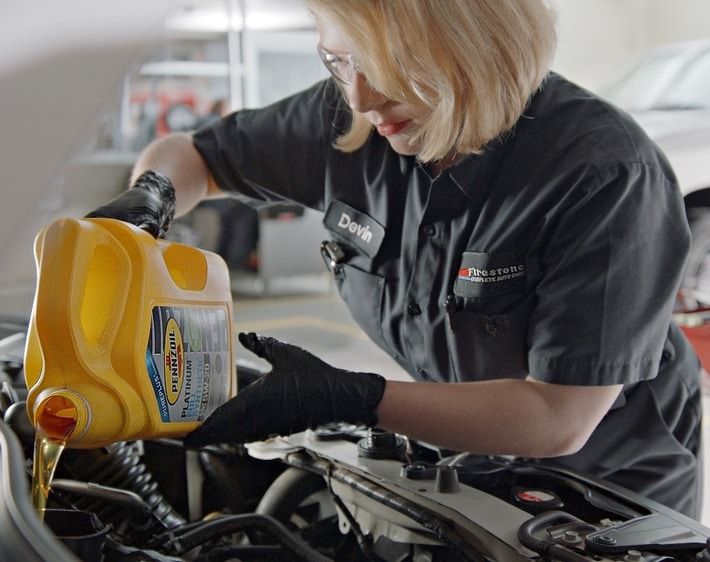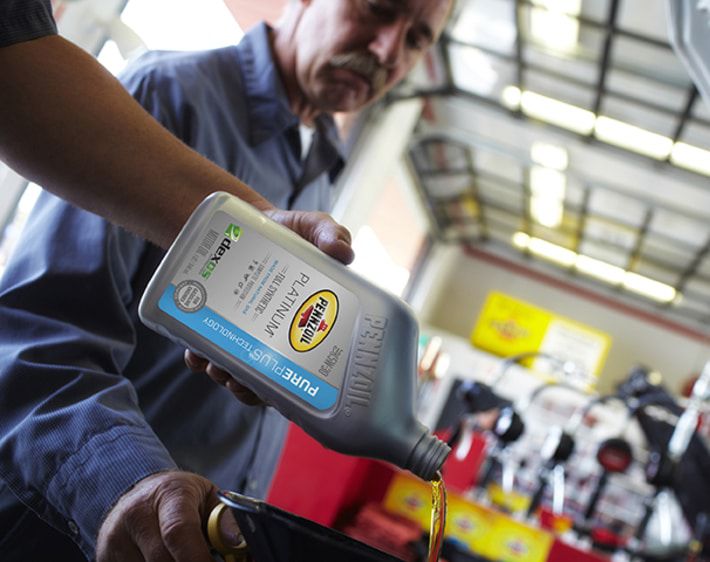
What does oil color tell me about my car’s health?
Checking the level, consistency, and color of your motor oil can give you quick insight into the health of your engine, helping you spot potential issues like engine oil contamination and leaks!
Engine oil color can change with age, additive degradation, contaminants, and heat, among other factors. Although certain shades of motor oil may help you sniff out possible problems, color alone should not be used as an excuse to delay an oil change or as a DIY diagnostic tool. In fact, most carmakers suggest using mileage, driving conditions, and the oil change intervals in your owner’s manual to tell when to schedule your next oil change.
First things first: how to check your engine oil color and clarity
Checking the color of your oil doesn’t take very long and doing so also allows you to inspect the oil levels at the same time! When you’re ready to check your engine oil, park your car on flat ground and allow the engine to cool for 10 or 15 minutes. The only tools you’ll need are gloves if you prefer to keep your hands clean, and a rag or paper towel.
With the engine turned off and slightly cooled, pop the hood and locate the oil dipstick — it typically has a plastic orange or red pull-tab. If you’re having trouble locating it or find two dipsticks under the hood instead of one, consult your vehicle’s owner manual to help you pinpoint the right one.
Pull the dipstick out, wipe it clean with a paper towel or rag, then place it all the way back into its tube. Wait for a moment, then pull it out once more and observe the oil level, color, and viscosity. After you get a clear reading of your engine’s oil color, give the dipstick one last wipe, and then make sure to fully insert it back into place.
What color should my engine oil be?
Typically, brand new engine oil is a slightly translucent amber color that has the consistency of olive oil. After new oil is added to your motor, it circulates through the engine block, lubricating its moving parts, redistributing heat, cleaning the engine, and helping inhibit rust and corrosion from forming as it goes!
Over time, the oil typically becomes darker and thicker, which makes it less efficient at its core jobs. Oil that can’t perform the way it should may compromise your engine’s health and create wear and oil consumption. These issues can lead to scary symptoms like blue or gray exhaust smoke, reduced fuel efficiency, and shaking while idling!
The color of clean engine oil: shades of amber
Clean engine oil can appear as different shades of amber, depending on the type of oil in your car and the age of your vehicle. According to Car Buyer Labs, certain additives may cause your oil to become darker faster. Motor oil also darkens as it absorbs by-products from combustion. Because of this, darker shades of amber by themselves aren’t a surefire sign that your engine oil is old or dirty. In fact, oil darkening may indicate it is doing its job well.
What does black engine oil mean?
Engine oil that's turned from a dark shade of amber to black could be a sign that your oil is old, especially if it is thick or sludgy. In some cases, black engine oil can indicate a clog in the fuel return line, which could allow contaminants into the engine, causing poor engine performance, inefficient gas mileage, and possibly engine failure.
What does brown or gray engine oil indicate?
If your engine oil turns brown or gray, you may need to do a little more investigating. Brown engine oil shouldn’t be an immediate cause for alarm. However, brown or grayish engine oil with a milky or foamy consistency can be a sign of contamination from a coolant leak or a sign that the engine idles excessively and seldom reaches operating temperature — which tends to happen to cars that are only driven for short periods.
Here's the problem with short trips. Water is produced as an engine burns fuel. It's part of the chemical equation. Hopefully, the water travels out of the tailpipe with the exhaust. However, some water can make its way into the engine oil and accumulate if the engine doesn't reach its optimal operating temperature often enough and for long enough. The optimal temperature is hard to reach on a short trip!
What causes rust-colored engine oil?
According to the Chicago Tribune, motorists who own older vehicles and live in areas with more humid or cooler weather may find themselves with rust-colored engine oil. Humid conditions can cause condensation buildup and surface rust on your metal dipstick, resulting in a rust-colored reading when checking motor oil. Alternatively, a reddish appearance in the oil might indicate the presence of automatic transmission fluid, which should be diagnosed by an automotive technician.
Check oil frequently to identify irregularities
Color is not the end-all-be-all indicator of engine oil health. However, it’s important to note color changes in your engine oil, especially when paired with fluctuations in oil consistency and volume, as they can help clue you into oil-related problems!
At the end of the day, checking your engine oil is a proactive form of DIY car care. But evaluating your engine oil takes more than just looking at its color — it takes professional services and maintenance, guided by the recommendations in your owner’s manual. Visit your local Firestone Complete Auto Care for an expert opinion on the state of your motor oil, affordable oil changes, and all things car care.



